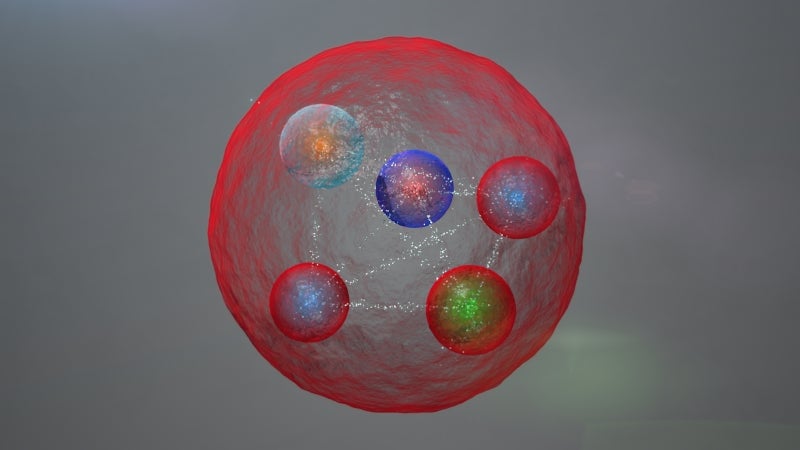Scientists at the Large Hadron Collider have discovered an exotic new state of matter
The world’s largest science experiment has achieved another milestone, finding a new state of matter called a “pentaquark.”


The world’s largest science experiment has achieved another milestone, finding a new state of matter called a “pentaquark.”
The existence of pentaquarks has been predicted for more than 50 years, but they have never before been observed experimentally. The person who made the prediction, Murray Gell-Mann, changed our understanding of the structure of matter and won the 1969 Nobel Prize for physics.
Many particle physics experiments since the 1990s have claimed to have seen pentaquarks—but their claims could not be replicated or verified. The new results from the Large Hadron Collider (LHC) at Geneva—yet to be peer-reviewed—are the most promising because they have been acquired at higher resolution than previous experiments.
Future results will only get better. The recently upgraded experiments restarted earlier in 2015 and have been able to produce double the collision energy, allowing scientists to observe phenomena that they had never seen before.
Small particles, such as protons, are accelerated to near speed of light with the help of magnets and are made to collide, which at such a high speed—nearly 1 billion km/h—causes an instant release of energy, producing an environment that is close to what would have existed at the beginning of the universe during the Big Bang. The upshot is that the resulting soup of split particles can then recombine in new ways, creating new particles.
The pentaquarks observed are the result of one such recombination. Like electrons, quarks are fundamental particles—that is, they cannot be further broken down. However, unlike electrons, quarks can never be directly observed because of nature’s weird laws. Instead, their presence is seen in the form of composite particles such as protons, which are made up of three quarks.
A pentaquark, as the name suggests, is made up of five quarks. The environment under which this exotic particle can be formed is found in a supernova—when a star explodes and releases all of its energy in a very short period of time rather than over a lifetime of billions of years.
Scientists admit that they weren’t specifically looking for pentaquarks, but they reached the conclusion of its existence by excluding all other possibilities. “Benefitting from the large data set provided by the LHC, and the excellent precision of our detector, we have examined all possibilities for these signals, and conclude that they can only be explained by pentaquark states,” said Tomasz Skwarnicki of Syracuse University.
Now that the LHC scientists have found one type of pentaquark, they are bound to find others. When they do, the findings will help them refine their understanding of what happens in these spectacular explosions occurring frequently in the universe—all the while sitting in an armchair in an underground man-made cave in Switzerland.